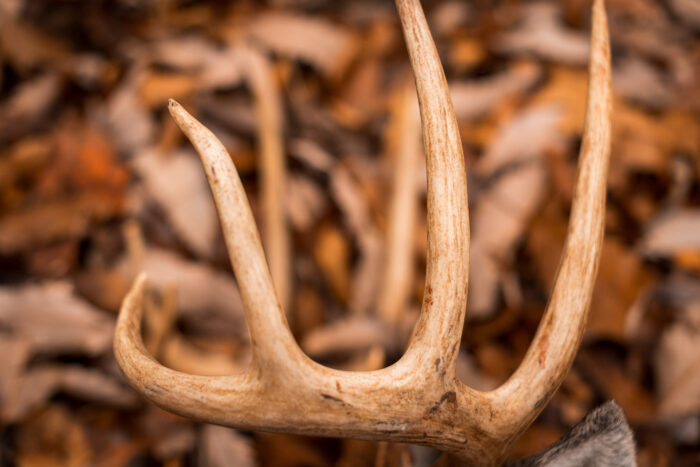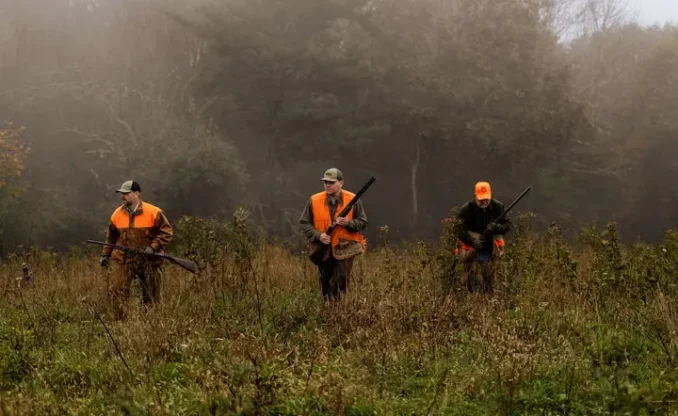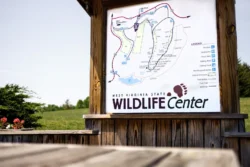The WVDNR is the agency tasked with monitoring and managing West Virginia’s wildlife populations and ensuring those species are sustainable into the future. In accordance with this duty, the WVDNR’s wildlife and fisheries biologists conduct surveillance and monitoring activities for multiple wildlife diseases that may cause mortality at the individual or population level.
Wildlife diseases are often a product of environmental and habitat changes, human activities, unnatural conditions, stress, pathogen changes and other factors. Some of these diseases are visible but have little impact (like cutaneous fibromatosis in white-tailed deer), while others are harder to detect but pose serious risks to wildlife populations (like Chronic Wasting Disease or chytridiomycosis in amphibians).
Once a disease becomes established in a wildlife population, it is often impossible to eradicate. That’s why prevention is the most important strategy for protecting wildlife.
Types of Wildlife Diseases
There are two types of wildlife diseases in West Virginia. Enzootic diseases occur at a predictable rate in wildlife populations. An example of enzootic disease in is strain rabies in raccoons and other forbearers in eastern West Virginia, which is controlled by dropping oral rabies vaccine by aircraft along a north/south corridor. Epizootic diseases occur in unusual places, times or at higher-than-expected levels. An example of epizootic disease is Hemorrhagic Disease (also called EHD or “blue tongue”) in white-tailed deer. EHD outbreaks have become more common in West Virginia since the 1990s, with multiple virus strains involved. Controlling epizootic diseases poses many challenges, such as detecting outbreaks, counting mortalities, determining scope and collecting samples. This is why public reports are crucial in helping WVDNR staff identify and respond to diseases in wildlife.

Chronic Wasting Disease
Chronic wasting disease affects white-tailed deer and other cervids and can have population-level impacts. Treatment is not an option, which is why the WVDNR focuses on preventing introduction through movement restrictions, carcass disposal rules and education.

Hemorrhagic Disease
Hemorrhagic disease is a virus in white-tailed deer that occurs seasonally in the late summer or early fall and ends after the first hard frost. While outbreaks can cause localized die-offs, these usually do not have any substantial effect on the deer population in the area.
Human Role in Wildlife Disease Spread
Human activities are one of the most important sources of disease introduction and spread with human associated pathogen pollution accounting for 60 percent of emerging diseases in wildlife globally.
Human activities that may lead to disease introduction or facilitate rapid spread of pathogens that cause disease include, but are not limited to:
- Trading or moving wild/captive animals (e.g., deer, amphibians, raccoons)
- Releasing captive or unlawfully possessed wildlife
- Feeding or baiting wildlife
- Improper transport or disposal of carcasses and parts
- Improper use of pesticides, herbicides or rodenticides and other toxicants
- Improper disposal of human or agricultural waste
- Environmental contamination with lead (e.g., from carcass waste)
Wildlife Health Surveillance
Because WVDNR staff cannot investigate every case, public reports are essential. Members of the public can are encouraged to report sick or dead wildlife by contacting their local WVDNR District Office. Be ready to provide:
- Location and date observed
- Species and number of animals
- Whether the animals are alive or dead
- Abnormal behaviors or visible signs of illness
Your reports help detect diseases early—before they spread widely. This is especially important for emerging diseases not yet in West Virginia, such as Rabbit Hemorrhagic Disease Virus 2 (RHDV-2).
How You Can Help Prevent Wildlife Diseases
As human factors involved in disease introduction and transmission are often the most easy to control, rules and regulations implemented by the WVDNR to reduce risks of introducing or spreading disease often focus upon human activities. Effectiveness of these regulations largely depends upon public compliance. The following recommendations will help you play your part in preventing and reducing wildlife diseases:
- ❌ Do not feed or bait wildlife
- ❌ Do not move or release wildlife
- ❌ Do not keep wild animals in captivity or release captive animals into the wild
- 🪶 If you feed birds, clean feeders every 2 weeks (soap + water, then 10% bleach solution)
- 🦌 If hunting, dispose of carcass parts properly (preferably in landfills)
- 🧴 Use artificial scents/lures instead of natural deer lures
- 📞 Report suspected wildlife disease cases to WVDNR
If you need more information about diseases, consult the following resources:



